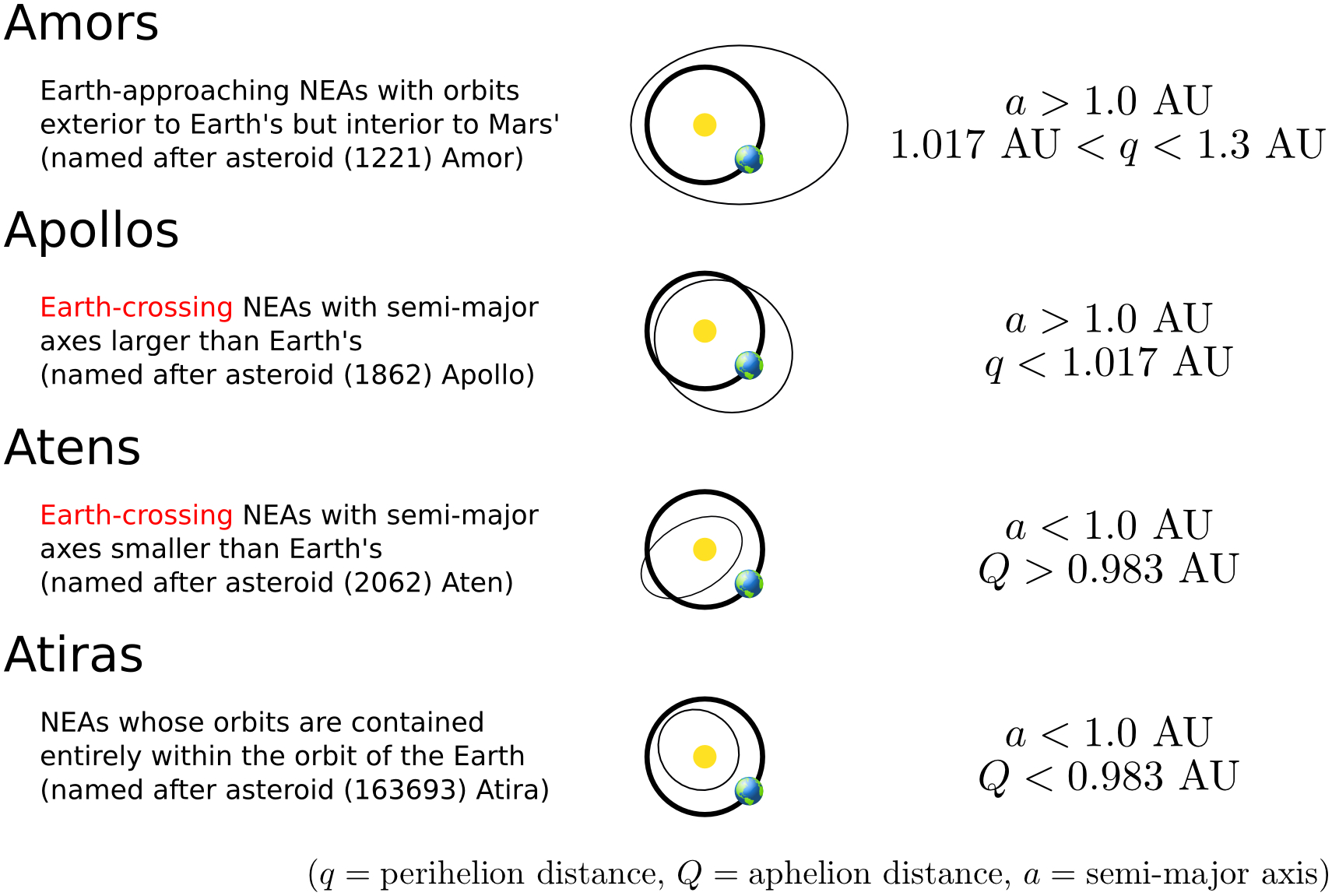In terms of orbital elements, NEOs are asteroids and comets with perihelion distance q less than 1.3 au . Near-Earth Comets (NECs) are further restricted to include only short-period comets (i.e., orbital period P less than 200 years). The vast majority of NEOs are asteroids, referred to as Near-Earth Asteroids (NEAs). NEAs are divided into groups (Atira, Aten, Apollo and Amor) according to their perihelion distance (q), aphelion distance (Q) and their semi-major axes (a).
Potentially Hazardous Asteroids (PHAs) are currently defined based on parameters that measure the asteroid's potential to make threatening close approaches to the Earth. Specifically, all asteroids with an Earth Minimum Orbit Intersection Distance (MOID) of 0.05 au or less and an absolute magnitude (H) of 22.0 or less are considered PHAs. In other words, asteroids that can't get any closer to the Earth (i.e., MOID) than 0.05 au (roughly 7,480,000 km or 4,650,000 mi) or are smaller than about 140 m (~500 ft) in diameter (i.e., H = 22.0 with assumed albedo of 14%) are not considered PHAs.
| Group | Definition | Description |
|---|---|---|
| NECs | q<1.3
au
P<200 years |
Near-Earth Comets |
| NEAs | q<1.3 au | Near-Earth Asteroids |
| Atiras | a<1.0
au
Q<0.983 au |
NEAs whose orbits are contained entirely with the orbit of the Earth (named after asteroid 163693 Atira). |
| Atens | a<1.0
au
Q>0.983 au |
Earth-crossing NEAs with semi-major axes smaller than Earth's (named after asteroid 2062 Aten). |
| Apollos | a>1.0
au
q<1.017 au |
Earth-crossing NEAs with semi-major axes larger than Earth's (named after asteroid 1862 Apollo). |
| Amors | a>1.0
au
1.017<q<1.3 au |
Earth-approaching NEAs with orbits exterior to Earth's but interior to Mars' (named after asteroid 1221 Amor). |
| PHAs | MOID<=0.05
au
H<=22.0 |
Potentially Hazardous Asteroids: NEAs whose Minimum Orbit Intersection Distance (MOID) with the Earth is 0.05 au or less and whose absolute magnitude (H) is 22.0 or brighter. |
